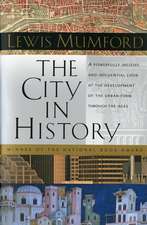Gendering Modernism: A Historical Reappraisal of the Canon
Autor Professor Maria Bucuren Limba Engleză Paperback – 20 sep 2017
| Toate formatele și edițiile | Preț | Express |
|---|---|---|
| Paperback (1) | 157.32 lei 43-57 zile | +24.10 lei 6-12 zile |
| Bloomsbury Publishing – 20 sep 2017 | 157.32 lei 43-57 zile | +24.10 lei 6-12 zile |
| Hardback (1) | 465.96 lei 43-57 zile | |
| Bloomsbury Publishing – 20 sep 2017 | 465.96 lei 43-57 zile |
Preț: 157.32 lei
Preț vechi: 172.07 lei
-9% Nou
Puncte Express: 236
Preț estimativ în valută:
30.10€ • 31.51$ • 25.06£
30.10€ • 31.51$ • 25.06£
Carte tipărită la comandă
Livrare economică 31 martie-14 aprilie
Livrare express 22-28 februarie pentru 34.09 lei
Preluare comenzi: 021 569.72.76
Specificații
ISBN-13: 9781350026254
ISBN-10: 1350026255
Pagini: 168
Ilustrații: 7 bw illus
Dimensiuni: 156 x 234 x 16 mm
Greutate: 0.23 kg
Editura: Bloomsbury Publishing
Colecția Bloomsbury Academic
Locul publicării:London, United Kingdom
ISBN-10: 1350026255
Pagini: 168
Ilustrații: 7 bw illus
Dimensiuni: 156 x 234 x 16 mm
Greutate: 0.23 kg
Editura: Bloomsbury Publishing
Colecția Bloomsbury Academic
Locul publicării:London, United Kingdom
Caracteristici
Moves beyond a strictly aesthetic definition of modernism, arguing that social, political, and scientific movements should be included in the canon
Notă biografică
Maria Bucur is John W. Hill Chair of European History and Professor in the Department of History at Indiana University Bloomington, USA. She is the author of Gender and War in Twentieth-Century Eastern Europe (2006) and co-author of Making Europe: The Story of the West (2nd edition 2012).
Cuprins
PrologueIntroduction: What Sort of Rebellion?1. Modernism before the Great War2. Modernism Flourishes3. The Modernist Canon: How Did it Come About?4. A New Set of Criteria: Rebellion, Rejection, and Reimagining ModernismConclusionSelected BibliographyIndex
Recenzii
Gendering Modernism definitely opens many new horizons for those who are interested in the evolution of gender norms and its influence on the formation of the modernist canon.
A useful introduction, contributing to the still very necessary task of keeping feminist issues visible.
Written with a rare clarity, concision, and lucidity, Gendering Modernism builds up a rich texture of references and details that cumulatively haul the highly neglected female dimension of modernism out of oblivion. The wealth of references and wide-ranging supportive bibliography give scholarly weight and substance to the three theses, resulting in a work which is a hybrid of essay, programmatic tract, and scholarly history. This highly readable, powerful book is relevant to both modernism and feminism studies, as well as to the cultural and political history of the period 1880-1945. It is rare to see a feminist perspective explored with such a deep sense of ambivalence and complexity, so that it amplifies and enhances traditional narratives instead of exploding them.
In true modernist spirit, Maria Bucur upsets the canon. Just as modernists rejected tradition and created new ways of seeing the world, this thought-provoking book argues that focusing on gender changes how we should evaluate modernism. Was modernism truly revolutionary if many of its practitioners adhered to traditional gender norms? Simultaneously erudite and accessible, Gendering Modernism asks its readers to rethink their fundamental assumptions about modernism and its icons.
A useful introduction, contributing to the still very necessary task of keeping feminist issues visible.
Written with a rare clarity, concision, and lucidity, Gendering Modernism builds up a rich texture of references and details that cumulatively haul the highly neglected female dimension of modernism out of oblivion. The wealth of references and wide-ranging supportive bibliography give scholarly weight and substance to the three theses, resulting in a work which is a hybrid of essay, programmatic tract, and scholarly history. This highly readable, powerful book is relevant to both modernism and feminism studies, as well as to the cultural and political history of the period 1880-1945. It is rare to see a feminist perspective explored with such a deep sense of ambivalence and complexity, so that it amplifies and enhances traditional narratives instead of exploding them.
In true modernist spirit, Maria Bucur upsets the canon. Just as modernists rejected tradition and created new ways of seeing the world, this thought-provoking book argues that focusing on gender changes how we should evaluate modernism. Was modernism truly revolutionary if many of its practitioners adhered to traditional gender norms? Simultaneously erudite and accessible, Gendering Modernism asks its readers to rethink their fundamental assumptions about modernism and its icons.












